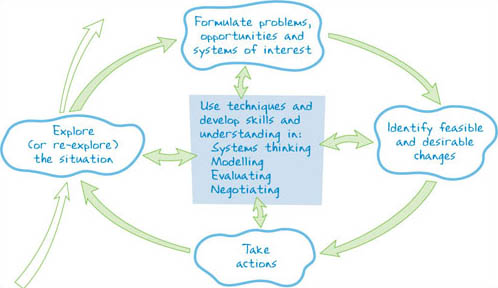6.1 Environmental decision making as a learning process
There are many ways of making decisions, and there are different ways of describing decision-making processes and recognising their boundaries. You are now going to be introduced to one framework that offers much to guide environmental decision making, and is a useful way of ordering thinking about decision making. It is based on tried and tested ways of analysing decision situations and of working out appropriate courses of action. The overall purpose of the framework is to provide a structure to enable environmental decision making to be a process of learning that allows for continuous improvement rather than a one-off, constrained activity that stops once a decision is made. The framework suggested is shown in Figure 20.

Activity 26 Engaging with the T863 framework
Watch this animated guide to the T863 framework by clicking on the ‘play’ button at bottom right. You will need to click through each time to get to the next step in the animation.
- a.Have you encountered similar frameworks before? If so, make a note of your experience of using them (purpose, context, usefulness, etc.). If not, just note down your current understanding of the word ‘framework’. (Record this in your journal or blog as you may find it useful to refer back to.)
- b.What questions occur to you as you start to engage with this framework? (e.g. Is the language familiar to you? What do you notice about the arrows in the diagram? Is anything surprising or missing?) Note down these questions and observations now, as you will later need to comment on the framework, after you have used it, and your first impressions may be useful to you in commenting on your own learning.
How does this framework compare with methods of decision making discussed in previous sections? An important distinction between the framework shown in Figure 31 and other staged procedures for decision making is the iterative nature of the process described. Although in many cases a clear ‘decision’ can be identified, this may not be an end in itself. What may be more important is the opportunity that this process provides for those concerned to learn about the situation, and to be better prepared to deal with similar situations in the future. The framework thus represents a formalisation of the experiential learning process described in Figure 11.
